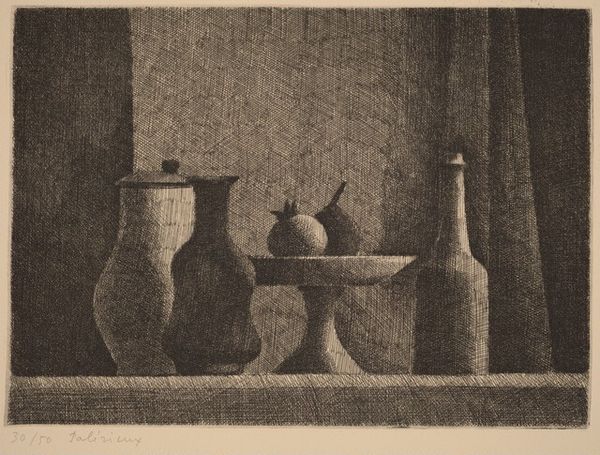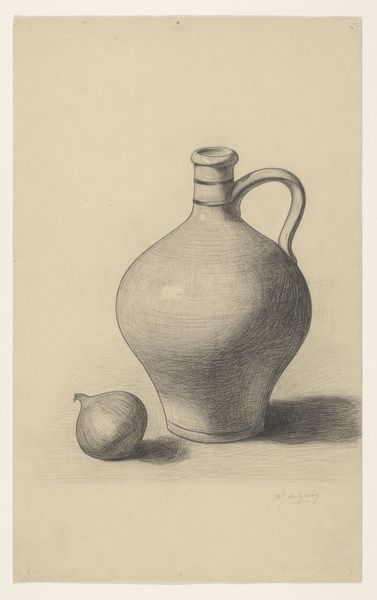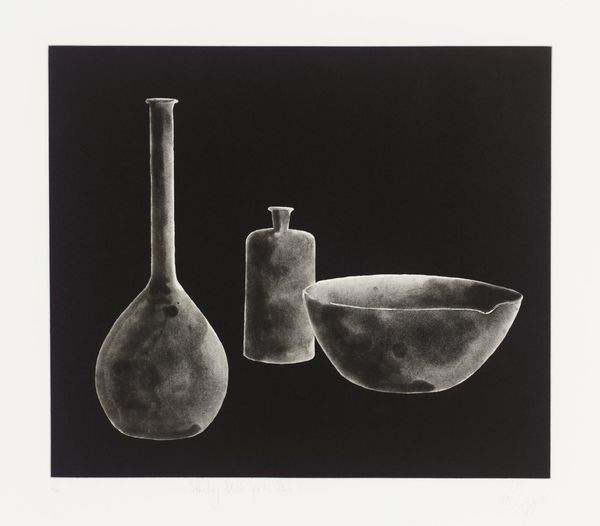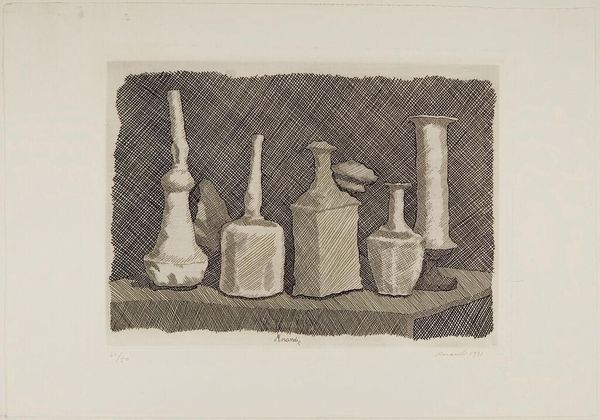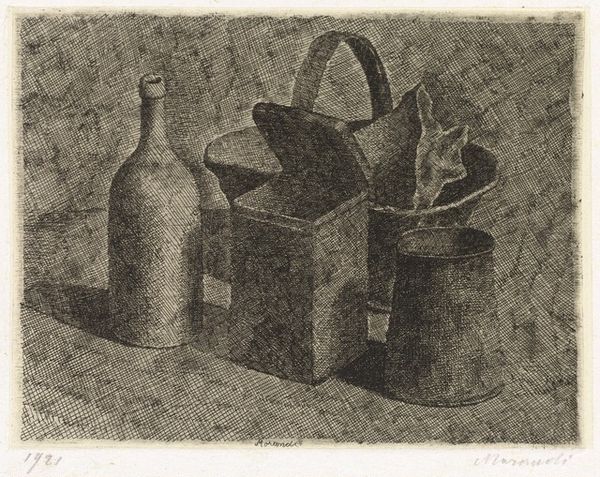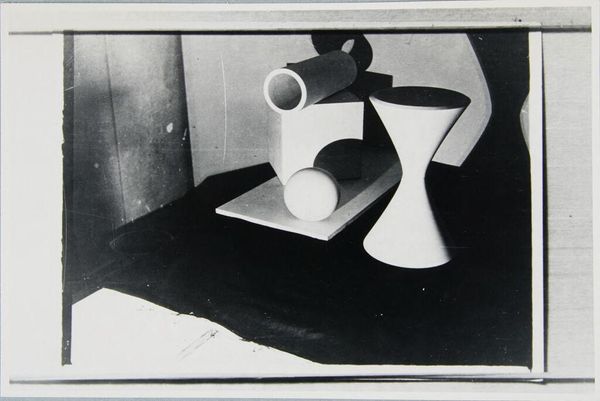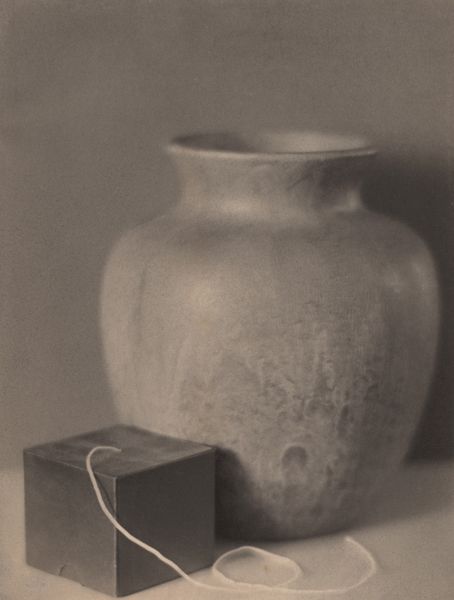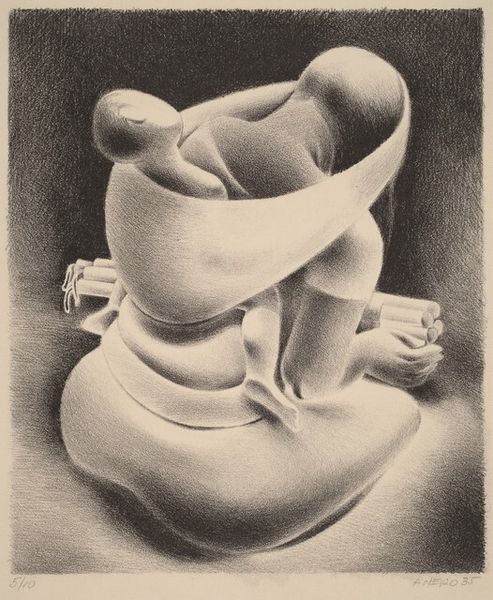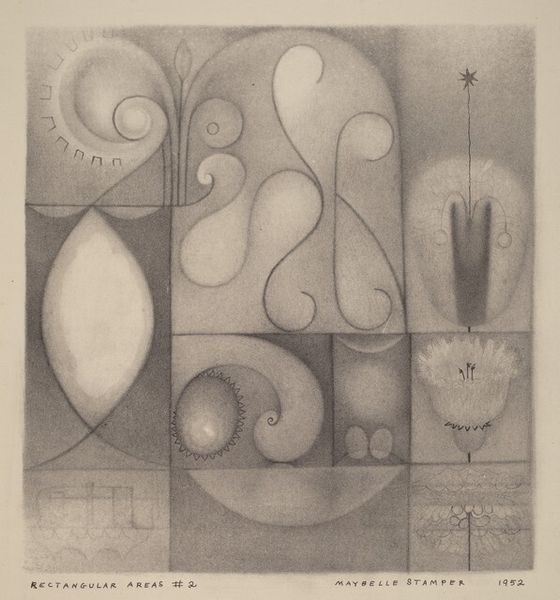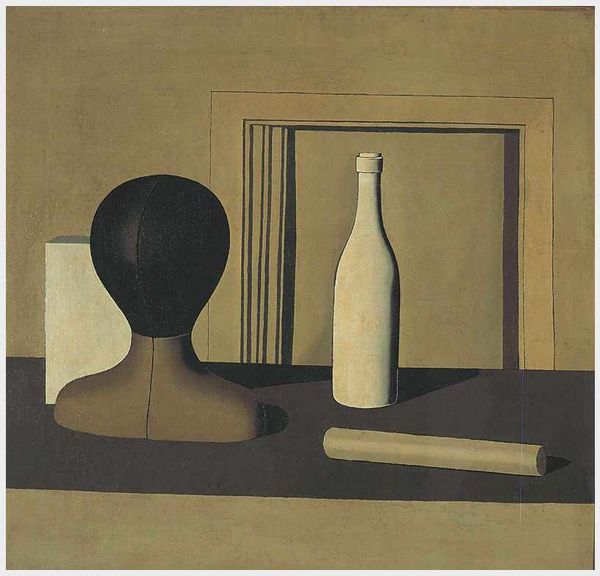
drawing, pencil, charcoal
#
drawing
#
charcoal drawing
#
form
#
pencil
#
charcoal
#
academic-art
#
charcoal
#
watercolor
#
realism
Copyright: Public domain
Editor: Here we have Lili Elbe's "Two Still Lives," created in 1901 using charcoal and pencil. It's amazing how she captures such depth using monochrome. It feels so serene and contemplative to me, like a quiet morning. What are your initial impressions? Curator: "Serene" is spot on, I think. And "contemplative" resonates, too. The artist seems to be searching not just for accurate representation but also for something deeper. Notice the arrangement – almost a conversation happening between these vessels. A conversation in shapes and light. What do you make of the fact that one vase is tilted, seemingly on its side? Editor: I hadn't thought about them conversing! Maybe the tilted one is more vulnerable? Or, I don't know...maybe it suggests instability, while the upright ones seem more secure. Is that too simplistic? Curator: Not at all! I wonder if Elbe is inviting us to consider the tension between fragility and resilience. Still life, traditionally, is about capturing a moment frozen in time. But maybe Elbe's suggesting time isn't so still after all? These objects exist in flux, and so do we. Doesn't the piece almost have a heartbeat? Editor: I love that interpretation – a heartbeat! I was so focused on the technical skill, but now I see the emotion in it. I will definitely look at still lifes differently going forward. Curator: Art has so much to offer once we go beyond the visual. Always question what more it has to say, and who knows, you might discover something that no one else has found. It may have more questions than answers for you, but maybe those answers will lead to the most amazing places!
Comments
No comments
Be the first to comment and join the conversation on the ultimate creative platform.
